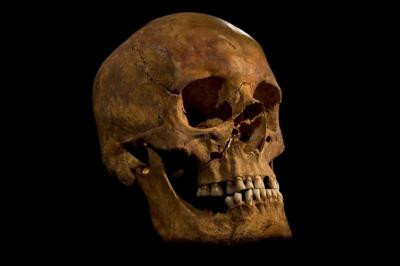Richard III Indulged in Orgy of Feasting As King, Claim Researchers

King Richard III had a diet even richer than that of other Medieval aristocrats, and feasted on swan, egret and heron, and washing it down with up to a bottle of wine a day, reveal new tests on his skeleton.
Samples were taken from the femur and tooth of the last Plantagenet king, whose remains were found under a car park in Leicester in 2012.
Experts from the University of Leicester and the British Geological Survey discovered that Richard indulged in an orgy of banqueting after being crowned in 1483.
"We know he was banqueting a lot more, there was a lot of wine indicated at those banquets and tying all that together with the bone chemistry it looks like this feasting had quite an impact on his body in the last few years of his life," University of Leicester geochemist Angela Lamb said.

"Richard's diet when he was king was far richer than that of other equivalent high-status individuals in the late medieval period."
Researchers believe he would have consumed the wine in addition to beer he would have drank while on campaign when unable to trust local water supplies.
Other recently released research shows that Richard's spinal curvature would not have hindered him on the battlefield.
Shakespeare famously portrayed Richard as a "poisonous hunchbacked dwarf" in his 1592 play.
For a Channel 4 programme 27 year-old teacher Dominic Smee, whose curvature of the spine is deemed identical to Richard's, dons a 60lb suits of armour, and wielded a sword while mounted on a horse, showing that Richard would have been able to fight in a Medieval battle.
Richard lost his life at the Battle of Bosworth Field, on August 22, 1485, where contemporaries described him leading a cavalry charge.
© Copyright IBTimes 2025. All rights reserved.






















